Glossary - alphabet order - "T"
TCXO
Abbreviation for "Temperature Compensated X'tal (crystal) Oscillator". For further description, see "temperature compensated crystal oscillator".
Reference: Temperature compensated crystal oscillator
Temperature compensated crystal oscillator
This crystal oscillator, called TXCO for short, includes a function for compensating the frequency variation according to the crystal oscillator's temperature. Generally, AT crystal devices have relatively better temperature characteristics. In order to obtain more stable frequencies, the temperature variation is compensated based on signals sent from a temperature sensor. There are two frequency compensation methods: an analog compensation method and a digital compensation method. Epson markets the TG Series of temperature compensated crystal oscillators.
Reference: TCXO
Temperature sensing crystal
This refers to a crystal device used for measuring temperature. It exploits typical characteristics of a crystal device, where oscillation frequency changes according to the temperature change.
Thickness shear vibration
This is a vibration mode in crystal units. As shown in the drawings at right, in this vibration mode the top and bottom surfaces along the crystal plate's thickness direction move opposite to each other. This mode is used in high-frequency crystal units such as AT crystal units. The frequency f is a function of the crystal chip's thickness T. For the fundamental frequency, f = k/T (k: constant)
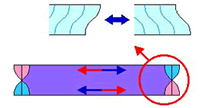 |
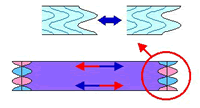 |
| Fundamental mode | Third-order overtone mode |
Reference: AT crystal unit
Tp
Amount of P-type polarized light on the transmission path after transmitting through an optical component.
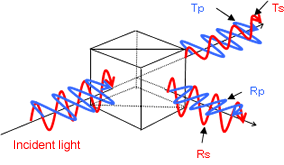
Transmission wave front aberration (Wavefront aberration for transmission)
Wavefront aberration in a transmission path.

Ts
Amount of S-type polarized light on the transmission path after transmitting through an optical component.
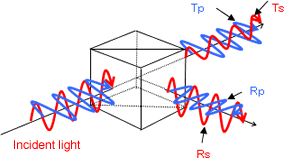
Tuning fork crystal unit
This type of crystal unit uses a tuning fork-shaped crystal chip. Its advantages including being suited for relatively low frequencies and being compact with a vibration plate that can be separated from its supports. See "flexure vibration" for description of the vibration mode.
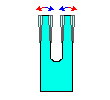 |
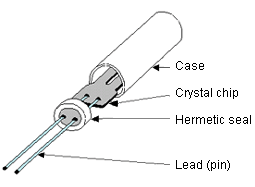 |
| Tuning fork crystal chip | aStructure of tuning fork srystal unit |
